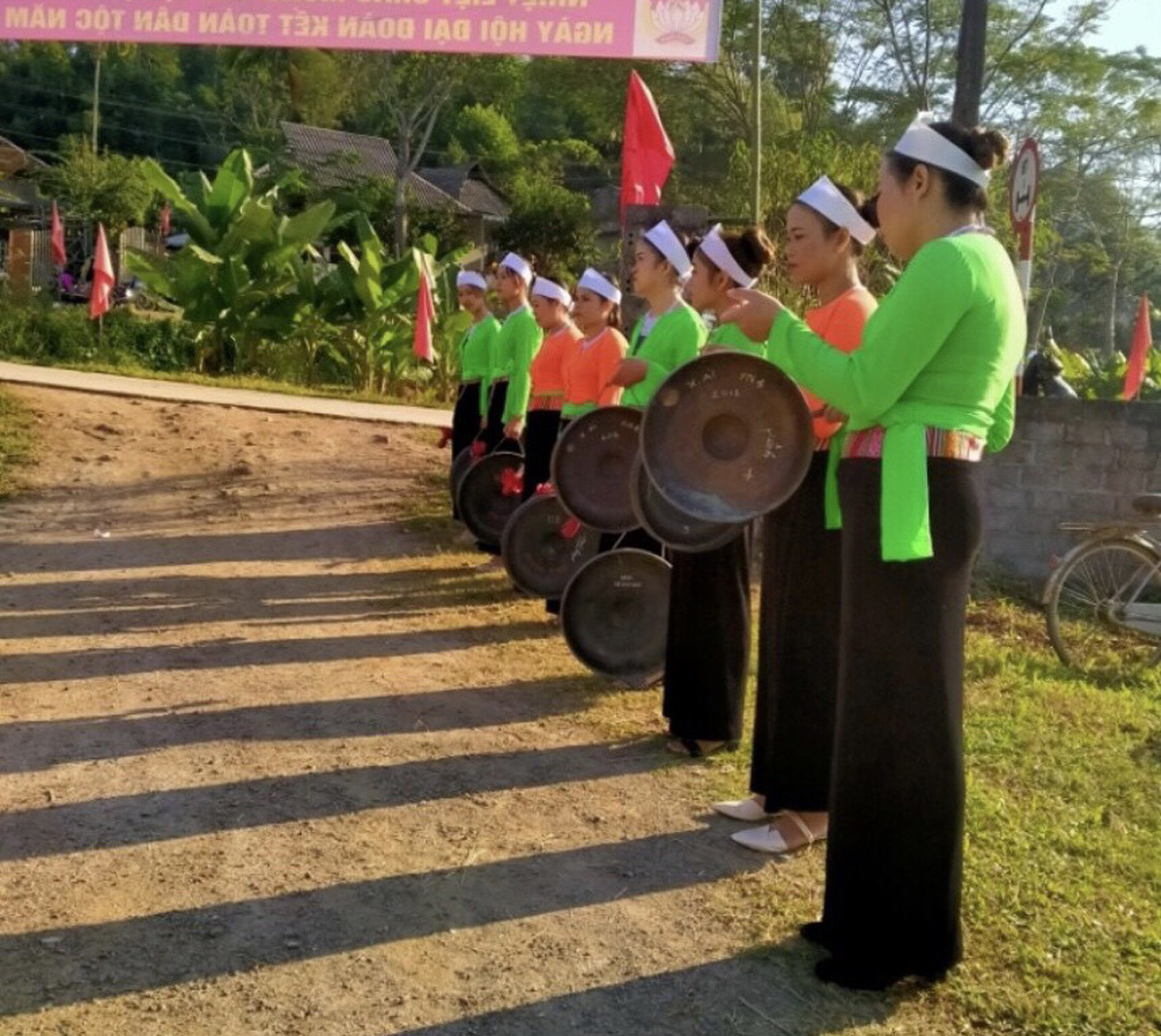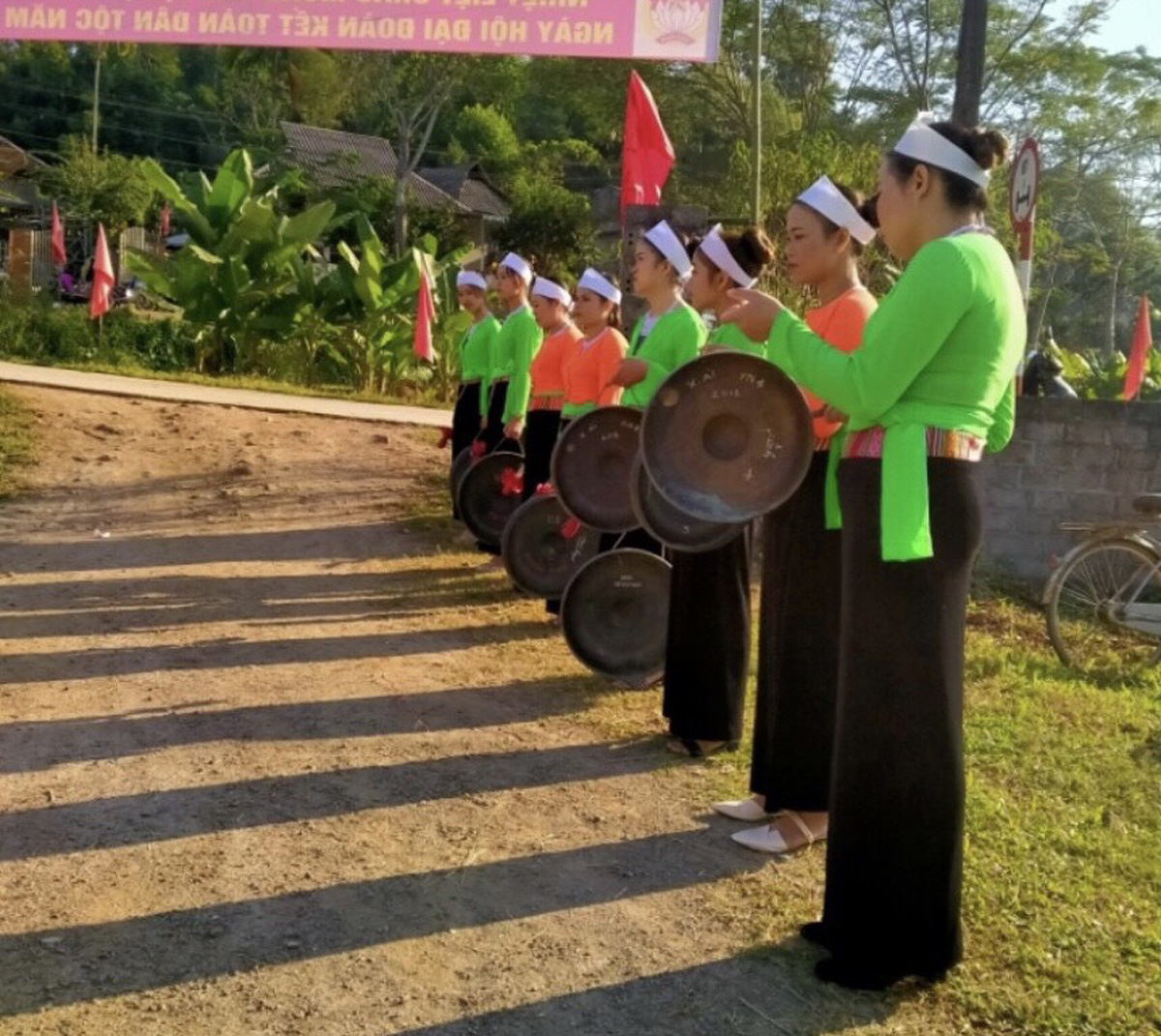
(HBO) – Over the past years, Phong Phu commune in Tan Lac district has paid due attention to preserving and promoting fine traditional cultural values, thus preserving the cultural trait of the locality and developing community-based tourism.
 A
"sac bua” performance in Phong Phu commune.
A
"sac bua” performance in Phong Phu commune.
The commune is home to 14 hamlets with more than
8,000 people, of whom 97 percent belong to the Muong ethnic group. Local Muong
people have maintained their traditional culture and customs, from stilt houses
to the Muong language, folk singing and gong performance.
There are nearly 200 Muong gongs of all kinds in the
locality, which are frequently used during Tet and other major festivals. The
club of "Mo Muong” – a traditional ritual of Muong people – gathers 32 members,
including famous ritual masters recognised as eminent artists.
Notably, Muong Luy Ai is one of the oldest Muong
hamlets where unique traditional culture and customs of the Muong have been
preserved. Muong Luy Ai was recognised by the provincial People’s Committee as a
community-based tourism hamlet in 2014.
However, many cultural values have faded, for
example only a handful of local households have maintained stilt houses built
from wood with traditional designs, while most of them have been partially and
completely concretised.
Weaving also face the same situation since it is now
practised by only elderly people in Son Phu, Luy Ai and Kha La hamlets.
Bui Van Nuc, Vice Chairman of the communal People’s
Committee, said to preserve and promote traditional cultural values, the
communal Party Committee and People’s Committee have put forth a specific plan.
Under the plan, weaving classes will be held in Luy Ai hamlet in
service of tourism.
Local authorities have also created conditions for
the Mo Muong club to open classes for young people who want to learn about the
folk ritual, and supported local residents in collecting ancient gong sets.
Communication work is promoted to raise the
awareness of youths about the significance of preserving traditional values, as
well as their sense of responsibility in this regard.
Such actions have contributed to improving people’s spiritual
life, while preserving and promoting traditional culture in the cause of
integration and development./.
With an increasingly vibrant and widespread emulation movement aimed at building cultured residential areas and cultured families, Yen Thuy District has been making steady progress toward improving both the material and spiritual well-being of its people, while fostering a civilized, prosperous, beautiful, and progressive community.
Once lacking recreational spaces and community facilities, Residential Group 2 in Quynh Lam Ward (Hoa Binh City) has recently received attention for the construction of a new, spacious, and fully equipped cultural house. The project followed the model of state support combined with public contributions in both labor and funding.
The "All people unite to build cultural life" movement, which has been effectively integrated with Kim Boi district’s socio-economic development goals, is fostering a lively spirit of emulation across local residential areas, hamlets, villages, public agencies, and enterprises. In addition, through the initiative, traditional cultural values are being preserved and promoted, while community solidarity and mutual support in poverty reduction and economic development are being strengthened.
A working delegation of the Hoa Binh provincial People’s Committee led by its Permanent Vice Chairman Nguyen Van Toan on June 11 inspected the progress of a project to build the Mo Muong Cultural Heritage Conservation Space linked to tourism services in Hop Phong commune, Cao Phong district.
Born and growing in the heroic land of Muong Dong, Dinh Thi Kieu Dung, a resident in Bo town of Kim Boi district, in her childhood was nurtured by the sweet lullabies of her grandmother and mother. These melodies deeply imprinted on her soul, becoming an inseparable part of her love for her ethnic group's culture. For over 20 years, this love for her hometown has driven Dung to research, collect, and pass down the cultural values of the Muong people to future generations.
In the final days of May, the Ethnic Art Troupe of Hoa Binh Province organized performances to serve the people in remote, mountainous, and particularly disadvantaged areas within the province. These were not just ordinary artistic shows, but they were the meaningful journeys aimed at spreading cultural values, enhancing the spiritual life of the people and contributing to the preservation of ethnic minority cultural identities.



 A
"sac bua” performance in Phong Phu commune.
A
"sac bua” performance in Phong Phu commune.